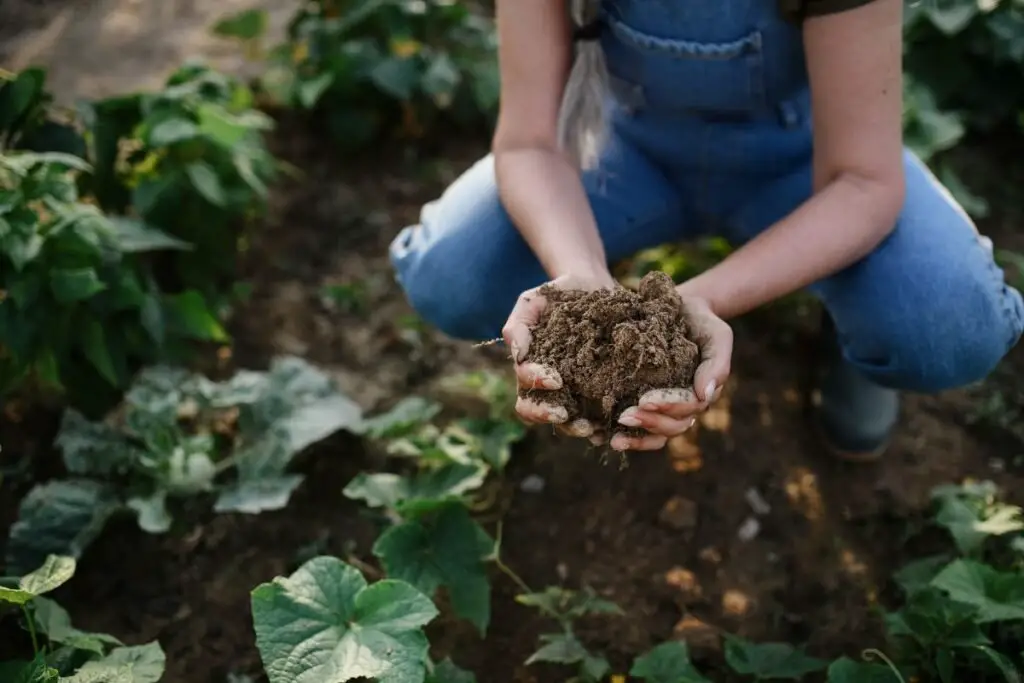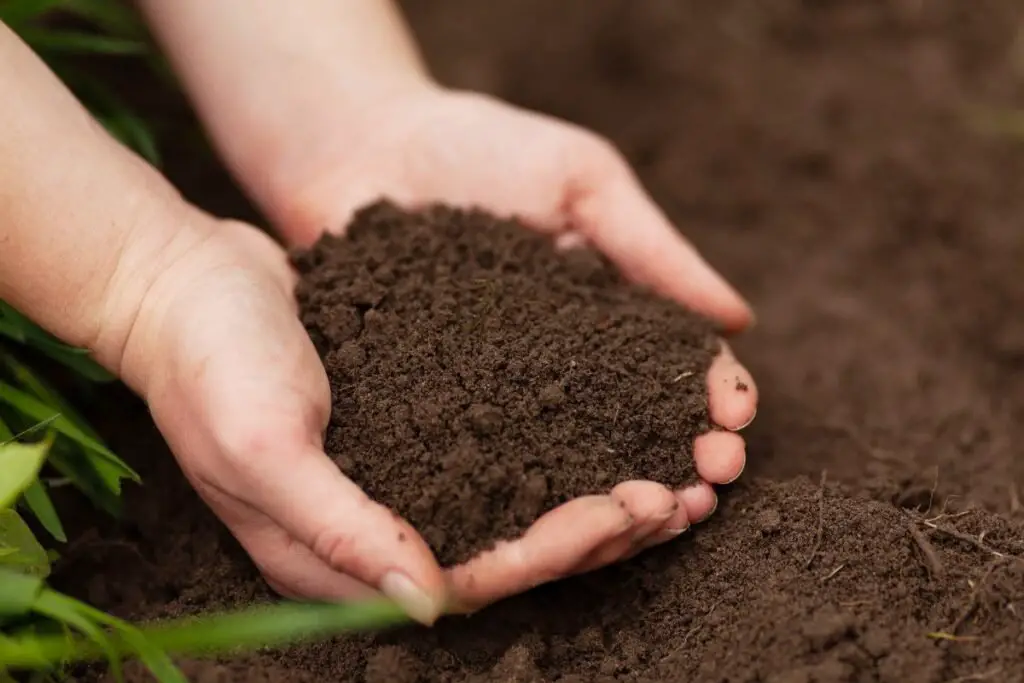Did you know that approximately 95% of our food, including crop yields, is directly or indirectly produced on the Earth's surface by farmers using traditional farming methods to increase crop productivity? That's a staggering statistic, emphasizing the critical importance of soil fertility in sustaining agricultural sustainability and regenerative agriculture life. Fertilizer plays a crucial role in enhancing agricultural productivity. In this post, we'll delve into the advantages and significance of agricultural sustainability and regenerative agriculture while exploring various techniques for enhancing soil fertility through conservation agriculture and other agricultural practices.
Here is the overview of the article: Exploring Different Techniques for Enhancing Soil Fertility.
Organic methods:
- Composting: This involves turning kitchen scraps, yard waste, and animal manure into nutrient-rich compost that you can add to your soil. Compost improves soil structure, retains moisture, and provides essential nutrients for plant growth.
- Cover cropping: Planting fast-growing cover crops like legumes and grasses between main crops adds organic matter to the soil, suppresses weeds, and fixes nitrogen from the air.
- Mulching: Applying a layer of organic material like leaves, straw, or wood chips around your plants helps retain moisture, suppress weeds, and gradually decompose, adding nutrients to the soil.
- Manure application: Adding aged manure from herbivores like cows, sheep, or horses provides a nutrient boost and improves soil structure.
Inorganic methods:
- Fertilizers: While relying solely on fertilizers isn't ideal, responsible use of balanced fertilizers can address specific nutrient deficiencies. Choose organic fertilizers whenever possible and avoid over-application.
- Liming: If your soil is too acidic, adding lime can raise the pH level, making nutrients more available for plants.
Other practices:
- Crop rotation: Planting different types of crops in the same area over time helps prevent nutrient depletion and pest and disease issues.
- Minimum tillage: Reducing soil disturbance through practices like no-till farming helps minimize erosion and preserve soil structure.
- Irrigation management: Overwatering can leach nutrients from the soil, while underwatering can stress plants. Using efficient irrigation methods ensures optimal water usage and nutrient retention.
Additionally, consider these factors:
- Soil testing: Before taking any action, get your soil tested to determine its current nutrient levels and pH. This helps identify specific deficiencies and tailor your restoration approach.
- Local resources: Look for locally available organic materials like compost, manure, and cover crop seeds to reduce your environmental footprint.
- Long-term approach: Restoring soil fertility takes time and consistency. Implement a combination of these methods and be patient while your soil gradually regains its health and vitality.
Remember, the best approach depends on your specific soil type, climate, and plant needs. Consulting with experienced farmers, agricultural experts, or soil conservation specialists can provide valuable guidance for your specific situation.
Now you can continue reading the article if you want to know more about : What are the various methods of restoring soil fertility?
Understanding Soil Fertility
Soil Health Concepts
Soil fertility refers to the soil's ability to sustain plant growth by providing essential nutrients and supporting regenerative agriculture, crop productivity, and food security without excessive tillage. Maintaining balanced soil ecosystems is crucial for enhancing soil fertility through conservation agriculture, regenerative agriculture, composting, and agroforestry. This involves understanding various indicators of soil health, such as pH levels, organic matter content, and nutrient availability in the context of regenerative agriculture and conservation agriculture farming practices to enhance crop productivity. Factors like erosion, compaction, and pollution can significantly impact soil health and subsequently affect its fertility, leading to degraded lands and reduced crop productivity. Implementing sustainable farming practices and minimizing tillage can help improve soil health.
Regenerative agriculture and agroforestry practices are crucial for preserving soil fertility and promoting a healthy balance within the ecosystem while minimizing tillage to enhance crop productivity. For instance, crop rotation and agroforestry help prevent nutrient depletion in the soil while tillage and regenerative agriculture contribute to organic matter enrichment and plants. By comprehending the key takeaways of precision agriculture and cover crops, farmers can make informed decisions to improve their soil's fertility and overall productivity in food production.
Nutrient Cycling
Efficient nitrogen cycling is vital for maintaining optimal crop productivity and food production. Decomposition also plays a crucial role in nutrient cycling. Natural processes like decomposition and mineralization facilitate the recycling of essential nutrients within the ecosystem, benefiting crop productivity through the involvement of beneficial soil organisms in the soil food web, such as fungi. Microorganisms such as bacteria and fungi play a critical role in breaking down organic matter into valuable nutrients that plants can utilize for growth. They are essential for maintaining a healthy soil food web, promoting the formation of soil aggregates and enhancing the structure of soil particles. Additionally, planting cover crops can further support the development of a robust soil food web.
Implementing sustainable farming techniques like no-till agriculture minimizes disturbance to the soil structure, allowing natural nutrient cycling processes, nitrogen, degraded lands, organisms, and cover crops to occur undisturbed. Incorporating fungi and cover crops alongside organic fertilizers rather than synthetic ones supports long-term nutrient cycling by providing slow-release nutrients that benefit the degraded lands and organisms over time.
Biological Control
Biological control methods offer an environmentally friendly approach to managing pests while preserving soil fertility. These methods involve using organisms such as fungi to control pests in agricultural lands, often in combination with cover crops. By harnessing beneficial organisms like ladybugs or nematodes, farmers can effectively control pest populations without resorting to chemical pesticides that may harm soil aggregates and lands, while also improving soil pH with cover crops in the process.
Integrated Pest Management (IPM) strategies emphasize using a combination of biological controls alongside cultural and mechanical methods for pest management, which can benefit the crop, soil organisms, lands, and soil aggregates. These approaches not only safeguard soil health but also promote ecological balance within agricultural systems by minimizing disruptions caused by conventional pest control measures, thus benefiting crop lands and organisms.
Promoting natural predators such as birds or predatory insects further contributes to maintaining ecological equilibrium on crop lands while protecting valuable resources like fertile soils from potential harm caused by unchecked pest populations and organisms.
Restoring Degraded Lands

Land Rehabilitation
Land rehabilitation involves various techniques for restoring degraded crop lands to improve their soil organisms fertility and productivity. This may include measures to enhance soil aggregates and adjust soil pH levels. This is crucial in agriculture as it helps to reclaim crop lands that have been damaged or depleted due to unsustainable farming practices, deforestation, or other human activities. It also plays a role in maintaining soil pH and supporting soil organisms. Reforestation is crucial for rehabilitating lands by planting trees and vegetation, which helps prevent soil erosion and enhances biodiversity, benefiting crop growth. Another method is contour plowing, where farmers plow across the slope of the lands instead of up and down, reducing water runoff and soil erosion, benefiting the crop.
Implementing sustainable approaches to rehabilitating lands is essential for long-term environmental health. These approaches can help support soil organisms, improve crop yield, and maintain optimal soil pH levels. For example, using cover crops such as legumes can help restore nitrogen levels in the lands naturally while also preventing weed growth. Practicing crop rotation allows different types of crops with varying nutrient needs to be grown in succession on the same piece of lands, promoting soil fertility without depleting specific nutrients excessively.
- Reforestation
- Contour plowing
- Cover crops (e.g., legumes)
- Crop rotation
Importance of Land Reclamation in Agriculture
The significance of reclaiming lands for crop cultivation and maintaining soil organisms and soil pH in agriculture cannot be overstated. By restoring degraded lands through effective crop techniques like reforestation and contour plowing, farmers can mitigate erosion issues caused by wind or water while preserving crop topsoil integrity. Maintaining the right soil pH is essential for promoting healthy crop growth and supporting soil organisms. It also helps in safeguarding lands and preventing sedimentation from reaching nearby bodies of water, thus contributing to maintaining water quality.
Furthermore, sustainable approaches to land rehabilitation promote ecological balance by fostering diverse habitats for beneficial organisms like crop pollinators and natural predators that support overall ecosystem health and the productivity of the lands. As a result, these rehabilitated lands contribute significantly towards climate change mitigation through carbon sequestration provided by healthy vegetation cover and the enhancement of soil organisms for improved crop growth.
- Mitigates erosion issues
- Preserves topsoil integrity
- Maintains water quality
- Promotes ecological balance
Rejuvenating Soils
Revitalizing depleted lands plays a pivotal role in enhancing crop productivity through rejuvenation methods such as composting organic matter back into the earth or utilizing natural fertilizers like manure or bone meal rich in essential nutrients like nitrogen and phosphorus.
Soil regeneration is crucial for the long-term sustainability of crop lands, promoting healthier plant growth and reducing reliance on harmful chemical inputs.
Sustainable Soil Restoration Techniques
Conservation Agriculture
Conservation agriculture involves soil management practices that aim to minimize soil disturbance, erosion, and promote sustainable crop production while preserving the lands. By reducing tillage, maintaining permanent soil cover, and practicing diverse crop rotations, conservation agriculture preserves the lands' soil structure and minimizes nutrient loss. These practices help enhance soil fertility in crop lands by improving water retention, reducing erosion, and promoting beneficial microbial activity.
Implementing no-till farming is a core principle of conservation agriculture, helping to preserve the health of lands and the diversity of soil organisms. This technique avoids disturbing the lands and soil through traditional plowing methods, which can lead to erosion and loss of organic matter. Instead, farmers directly plant seeds into untilled lands or use minimal disturbance techniques. This approach helps maintain the natural structure of the lands while fostering a healthier environment for microorganisms crucial for nutrient cycling.
By adopting cover cropping as part of conservation agriculture practices, farmers plant specific crops during off-seasons to protect the lands from erosion while also enriching the soil with organic matter when these crops decompose. This process not only enhances soil fertility, but it also contributes to weed suppression and pest control without relying on chemical inputs.
Agroforestry Benefits
Agroforestry integrates trees into agricultural landscapes to harness their benefits in enhancing soil fertility. Trees play a vital role in agroforestry systems by contributing essential nutrients through leaf litter decomposition and root exudates that improve overall soil health. The presence of trees helps reduce wind speed at ground level, minimizing water evaporation from soils and providing shade that maintains favorable moisture levels for crops.
The advantages of agroforestry in enhancing soil fertility are evident in its ability to increase carbon sequestration within soils due to enhanced organic matter accumulation from tree residues. Agroforestry promotes biodiversity as trees create habitats for various organisms crucial for healthy ecosystem functioning.
Sustainable agroforestry practices involve strategic tree planting patterns within farmlands that complement existing crops rather than competing with soil organisms for resources like sunlight or nutrients. For example, alley cropping incorporates rows of trees with spaces between where annual food or cash crops are grown; this arrangement allows both components to thrive without compromising each other's growth.
Innovative Methods for Soil Revitalization
Biochar Application
Biochar application involves utilizing biochar as a soil amendment, which offers numerous benefits in enhancing soil fertility. When biochar is added to the soil, it helps improve water retention and nutrient availability, thereby promoting healthier plant growth. This innovative technique also aids in increasing the soil's microbial activity, contributing to long-term soil health.
One of the key benefits of using biochar as a soil amendment is its ability to sequester carbon in the soil for an extended period. This not only supports efforts to combat climate change but also enhances the overall stability and fertility of the soil. Sustainable application methods for biochar include incorporating it into compost or directly mixing it with topsoil, ensuring efficient distribution throughout the agricultural land.
Utilizing organic fertilizers alongside biochar can further amplify its impact on improving soil fertility. For instance, combining biochar with organic composting materials creates a potent blend that enriches the soil with essential nutrients while fostering a favorable environment for beneficial microorganisms.
Regenerative Practices
Implementing regenerative agriculture techniques serves as another groundbreaking approach to enhancing soil fertility through sustainable means. By adopting regenerative practices such as crop rotation, cover cropping, and reduced tillage, farmers can restore ecosystem balance while simultaneously rejuvenating degraded soils.
Restoring ecosystem balance through regenerative practices involves nurturing diverse plant species within agricultural landscapes. This fosters symbiotic relationships between different plants and microorganisms present in the soil, leading to improved nutrient cycling and enhanced overall biodiversity within farming systems.
Enhancing soil fertility with regenerative approaches extends beyond immediate agricultural benefits; these practices contribute significantly to mitigating environmental degradation by reducing erosion and minimizing chemical inputs typically associated with conventional farming methods.
Precision Agriculture for Fertility
Data-Driven Nurturing
Precision agriculture, also known as precision farming, involves using technology and data to optimize soil management. By harnessing the power of data, farmers can make informed decisions about their land. This approach is crucial for sustainable farming as it allows for more efficient resource allocation.
Implementing data-driven strategies enables farmers to monitor soil conditions in real-time. For example, sensors can collect information on moisture levels and nutrient content, providing valuable insights into the health of the soil. With this knowledge at their fingertips, farmers can adjust irrigation and fertilization precisely where needed.
Utilizing advanced technology in optimizing soil management is essential for achieving long-term sustainability in agriculture. By embracing precision agriculture techniques, such as remote sensing and GPS-guided machinery, farmers can minimize environmental impact while maximizing crop yields.
Nutrient Management
Balancing nutrient levels in the soil is a fundamental aspect of enhancing fertility. Sustainable fertilizer application techniques play a pivotal role in maintaining optimal nutrient levels without causing harm to the environment. Through precise application methods like variable rate technology (VRT), farmers can tailor fertilizer usage based on specific areas within their fields.
Precision nutrient management not only benefits crop growth but also reduces excess nutrient runoff that contributes to water pollution. For instance, by employing site-specific applications of nutrients through grid sampling or zone mapping, farmers ensure that plants receive adequate nourishment while minimizing waste.
The Role of Organic Matter
Enhancing Soil Structure
The organic matter in the soil plays a crucial role in improving its physical properties. It helps create aggregates, which are clusters of soil particles bound together. These aggregates provide pore spaces for air and water movement, promoting better root growth and penetration. By enhancing soil structure, organic matter contributes to improved drainage, reduced compaction, and increased nutrient availability for plants.
Techniques such as adding compost or other organic materials can significantly enhance soil structure. For example, incorporating compost into the soil can help improve its ability to retain moisture while also preventing erosion. This is because compost contains various sizes of organic compounds that act like a sponge, holding onto water and releasing it slowly to plant roots over time.
Improving Water Retention
One of the key benefits of increasing the content of organic matter in soils is the improvement in water retention capacity. Soils with higher levels of organic matter have greater ability to hold onto water, reducing runoff and enhancing sustainable irrigation practices. This means that during dry periods or droughts, soils with sufficient organic matter can better support plant growth by providing a more consistent supply of moisture.
Moreover, maintaining good levels of organic matter promotes an environment conducive to diverse populations of beneficial microorganisms within the soil. These organisms contribute to creating stable aggregates and channels that further improve water infiltration and retention capabilities.
Cover Crops and Soil Health
Nature's Superheroes
Earthworms and beneficial insects play a crucial role in maintaining soil health. Earthworms burrow through the soil, creating channels that improve aeration and water infiltration. They also break down organic matter, releasing essential nutrients for plant growth. Beneficial insects like ladybugs and ground beetles help control pests that can damage crops. By promoting biodiversity, farmers can harness the power of nature to create sustainable farming practices.
For example, planting cover crops such as legumes not only enriches the soil with nitrogen but also attracts beneficial insects like bees and butterflies. This creates a balanced ecosystem where these creatures contribute to pollination while naturally controlling harmful pests.
Impact on Fertility
Understanding the relationship between soil health and fertility is vital for sustainable agriculture. Techniques such as incorporating cover crops, crop rotations, and utilizing crop residues all contribute to enhancing soil fertility. These methods improve soil structure, increase organic matter content, promote microbial activity, retain moisture, prevent erosion, and suppress weeds - all factors critical for boosting fertility.
Conservation Tillage Practices
Minimalist Farming
Conservation tillage is a key technique for enhancing soil fertility. One approach to conservation tillage is minimalist farming, which focuses on sustainable practices with minimal environmental impact. This method aims to reduce resource inputs while maintaining productivity. By minimizing the use of resources such as water and fertilizers, farmers can preserve natural resources and promote long-term soil health.
Minimalist farming involves techniques like reduced or no-till cultivation, cover cropping, and crop rotation. These practices help in retaining moisture in the soil, preventing erosion, and improving overall soil structure. For example, by leaving plant residues on the field after harvest instead of tilling them under the soil surface, farmers can enhance organic matter content in the soil.
Another aspect of minimalist farming is its importance in preserving natural resources. With growing concerns about climate change and environmental sustainability, adopting sustainable agricultural practices becomes crucial for ensuring food security while conserving our planet's resources.
Soil Erosion Reduction
Soil erosion reduction is another vital component of conservation tillage techniques aimed at enhancing soil fertility. Strategies to prevent and control soil erosion play a significant role in maintaining fertile soils for agriculture. Sustainable land management practices such as conservation tillage help reduce erosion by minimizing disturbance to the topsoil during planting time and other agricultural activities.
By implementing conservation tillage methods like no-till or reduced-till cultivation, farmers can protect their fields from wind and water erosion that often leads to loss of valuable topsoil nutrients. For instance, avoiding inversion tillage where the entire layer of topsoil gets turned over helps maintain essential nutrients within reach of plant roots.
The significance of erosion control lies in its direct impact on sustaining healthy soils necessary for productive crops. Without effective measures to curb erosion caused by conventional plowing or intensive tilling operations, soils lose their ability to support robust plant growth due to nutrient depletion and compaction.
The Future of Sustainable Soil Management

Enhancing soil fertility has a significant positive impact on agricultural productivity. According to recent statistics, sustainable soil management practices have led to a substantial increase in crop yield and overall farm profitability. For example, farms that have adopted sustainable land management techniques such as cover cropping and crop rotation have reported up to a 25% increase in their crop yields over time.
Moreover, the implementation of sustainable soil management practices has shown promising trends in enhancing overall agricultural productivity. In regions where farmers have actively engaged in improving soil fertility, there has been an observable decrease in the use of chemical fertilizers and pesticides, leading to reduced environmental pollution. This shift towards more environmentally friendly farming methods is not only beneficial for the long-term sustainability of agricultural lands but also contributes positively to global efforts aimed at mitigating climate change.
To further illustrate the benefits of enhanced soil fertility, it's important to note that improved soil health directly translates into better water retention capacity and increased nutrient availability for crops. These factors are crucial contributors to achieving higher yields while maintaining the ecological balance of farmlands.
Technology in Agriculture
The role of technology in modern agriculture cannot be overstated. Advancements in precision farming technologies enable farmers to monitor their fields with unprecedented accuracy, allowing them to make informed decisions about irrigation, fertilization, and pest control strategies based on real-time data.
For instance, through the use of satellite imagery and drones equipped with advanced sensors, farmers can identify areas within their fields that require specific attention regarding soil health or moisture levels. This targeted approach ensures that resources are utilized efficiently while minimizing any negative impact on the environment.
Incorporating innovation for sustainable agricultural practices involves leveraging tools such as automated irrigation systems and sensor-based nutrient application technologies. These innovations contribute significantly towards optimizing resource utilization while simultaneously promoting healthier soils for sustained productivity over time.
Conclusion
You've now delved into various techniques for enhancing soil fertility, from sustainable restoration methods to the pivotal role of organic matter and precision agriculture. The future of sustainable soil management lies in our hands, and it's crucial to apply these practices to ensure the health and productivity of our lands.
As you reflect on these insights, consider how you can contribute to soil fertility in your own capacity. Whether it's through supporting local initiatives, adopting sustainable farming practices, or advocating for responsible land management, each action plays a part in nurturing our soils for future generations.
Frequently Asked Questions
What are the main factors that contribute to soil fertility?
Soil fertility is influenced by several factors, including organic matter content, nutrient levels, soil structure, and microbial activity. These factors work together to support healthy plant growth and sustainable agriculture.
How can cover crops improve soil health and fertility?
Cover crops help enhance soil fertility by reducing erosion, suppressing weeds, increasing organic matter content, and promoting beneficial microbial activity. They also contribute essential nutrients back into the soil as they decompose.
What is precision agriculture in relation to enhancing soil fertility?
Precision agriculture involves using technology to optimize crop production while minimizing waste. By precisely managing inputs such as water, fertilizer, and pesticides based on specific field conditions, it helps maintain or improve soil fertility more efficiently.
Why is conservation tillage important for maintaining soil fertility?
Conservation tillage practices minimize disturbance to the soil structure and reduce erosion. This approach helps preserve valuable organic matter in the topsoil layer while promoting better water retention and overall soil health.
How does sustainable soil management ensure long-term fertility?
Sustainable practices like crop rotation, integrated pest management, reduced tillage techniques, and organic amendments promote balanced nutrient cycling within the ecosystem. This approach supports long-term productivity while preserving environmental quality.
Image Source: Paid image from CANVA



